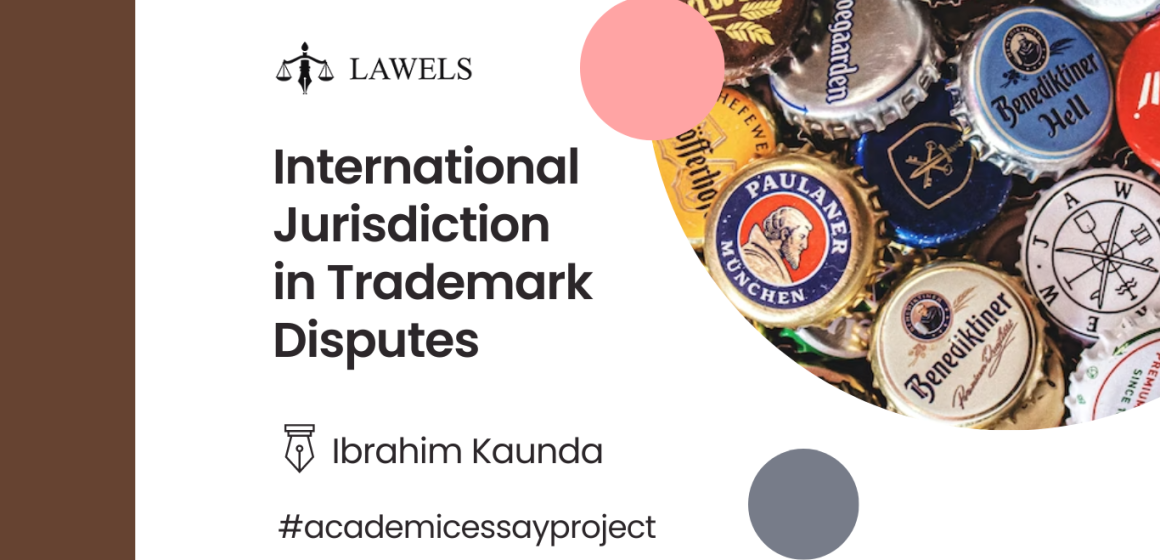Author: Ibrahim Kaunda, Masters of Law and Legal Practice Course at the University of Law in London, 2022-2023, e-mail: [email protected]
Editor: Danai Daisy Chirawu, Erasmus Mundus Joint Masters in Human Rights Policy & Practice (2021-2023), The University of Gothenburg, University of Deusto, University of Roehampton & The Arctic University of Norway, Bachelor of Laws (With Honours) (LLBS) (2012-2016) – the University of Zimbabwe, e-mail: [email protected]
INTRODUCTION
The relevance of law is that it must be applicable and enforceable in the area where it is recognised and accepted by all. This is not always the case as international trademark law has been seen as conflicting with other local laws in some parts of the world. It is so because sometimes it is economically demanding and therefore not uniformly applicable worldwide. The rules are not the same in all parts of the world. Despite having a global market, it should be noted that the law is still locally applied. The coming of the internet has made this area of law so difficult to apply internationally. Due to the growth in technology, it has been observed that international choice of law in trademark disputes is more important as compared to the locally applicable laws[1]. This paper is going to discuss the challenges trademark protection is facing across borders.
WHY IS IT DIFFICULT?
Some powerful companies have made it possible in global markets due to the coming of the internet. This has also made the use of locally made laws inapplicable. Looking at these developments one would say that there is a need to develop and implement international trademark law that will be applicable worldwide[2]. However, this cannot happen in a blink of an eye as intellectual property law has always been seen as a small and mostly geographically regulated market. The first improvement from the territorial intellectual property law of trademark was the free movement of goods that was created by the European Union under the principle of a single market. This was the improvement of trademark law in the European union[3]. The development of the unitary trademark was one of the advanced stages in intellectual property law.[4] This has moved trademark protection from the national scope to a European scope. However, this has not solved the international jurisdiction as there are still some challenges to the expansion of the development of intellectual property laws[5]. Despite the effort by the European Commission, copyright law is still at the European regional level[6]. It is also difficult to end regional Intellectual property law within a single market, due to the agreement itself which does not prevent the change from regional to international[7]. Therefore, making the future application of the law uncertain. However, some measures have been put in place in trying to bridge the gap between international and local protection. To avoid strict territorial, attempts have been made to match the national laws to the use of private international law, this includes jurisdiction and choice of laws in the transnational agreements.[8] This is to encourage parties to put measures in place for the disagreements that might occur during business transactions. Not only has the coming of the internet made this area of law a concern but also highly relevant to the point that this topic has become a burning topic in intellectual property law. It is important to consider how to deal with the inappropriate use of trademarks across borders.[9]
CONCLUSION
The use of trademarks unlawfully due to the coming of the internet has become uncontrollable hence the need to widen jurisdiction across borders. Even though some efforts have been made in this area of law, there is still a lot that needs to be done to fully protect trademarks. The identification of the court which has jurisdiction to deal with the dispute in this area of law is the first step that needs to be cleared. The second step is to determine the relevant laws that need to be applied.
BIBLIOGRAPHY
Marshall A. Leaffer, The New World of International Trademark Law, 2 MARQ. INTELL. PROP. L. REV. 1, 28 (1998).
Graeme Dinwoodie, Trademarks and Territory: Detaching Trademark Law from the Nation-State, 41 HOUS. L. REV. 885 (2004) (explaining the need for, and resistance to, a shift from local to international trademark protection).
Council Directive 89/104 on the harmonisation of trademark law, [1989] O.J. L40/1 [hereinafter, the EU Trademark Directive]
Council Regulation 207/2009, Regulation on the Community Trademark, art. 1, 2009 O.J. (L 78) 3 (EC).
Council Regulation 1257/2012, Implementing Enhanced Cooperation in the Area of the Creation of a Unitary Patent Protection, 2012 O.J. (L 361) (EU)
Council Regulation 1260/2012, Implementing Enhanced Cooperation in the Area of the Creation of a Unitary Patent Protection regarding the Applicable
Commission Green Paper on the Online Distribution of Audio-visual Works in the European Union, at 3, COM (2011) 427 (July 13, 2011).
SAgreement on Trade-Related Aspects of Intellectual Property Rights, art. 6, Apr. 15,
1994, Marrakesh Agreement Establishing the World Trade Organization, Annex 1C, THE LEGAL TEXTS: THE RESULTS OF THE URUGUAY ROUND OF MULTILATERAL TRADE NEGOTIATIONS 320 (1999), 1869 U.N.T.S. 299, 322 [hereinafter TRIPS Agreement].
See Francois Dessemontet, The Emergence of Private International Law of Intellectual
Property, in PRIVATE INTERNATIONAL LAW AND INTELLECTUAL PROPERTY—A NEW FRAME FOR NEW
STRATEGIES 12 (C. Nourissat & E. Treppoz eds., 2010).
Goldsmith, J. (1998). The Internet and the Abiding Significance of Territorial Sovereignty.
Indiana Journal of Global Legal Studies, 5(2), 475–491.
[1]Marshall A. Leaffer, The New World of International Trademark Law, 2 MARQ. INTELL. PROP. L. REV. 1, 28 (1998).
[2] Graeme Dinwoodie, Trademarks and Territory: Detaching Trademark Law from the
Nation-State, 41 HOUS. L. REV. 885 (2004) (explaining the need for, and resistance to, a shift from local
to international trademark protection).
[3] Council Directive 89/104 on the harmonisation of trade mark law, [1989] O.J. L40/1 [hereinafter, the EU Trademark Directive]
[4] Council Regulation 207/2009, Regulation on the Community Trademark, art. 1, 2009 O.J. (L 78) 3 (EC).
[5] See Council Regulation 1257/2012, Implementing Enhanced Cooperation in the Area of the
Creation of a Unitary Patent Protection, 2012 O.J. (L 361) (EU); Council Regulation 1260/2012,
Implementing Enhanced Cooperation in the Area of the Creation of a Unitary Patent Protection with Regard to the Applicable Translation Arrangements, 2012 O.J. (L 361) (EU).
[6] Commission Green Paper on the Online Distribution of Audio-visual Works in the European Union, at 3, COM (2011) 427 (July 13, 2011).
[7]See Agreement on Trade-Related Aspects of Intellectual Property Rights, art. 6, Apr. 15,
1994, Marrakesh Agreement Establishing the World Trade Organization, Annex 1C, THE LEGAL TEXTS: THE RESULTS OF THE URUGUAY ROUND OF MULTILATERAL TRADE NEGOTIATIONS 320 (1999), 1869 U.N.T.S. 299, 322 [hereinafter TRIPS Agreement].
[8] See Francois Dessemontet, The Emergence of Private International Law of Intellectual
Property, in PRIVATE INTERNATIONAL LAW AND INTELLECTUAL PROPERTY—A NEW FRAME FOR NEW
STRATEGIES 12 (C. Nourissat & E. Treppoz eds., 2010).
[9] Goldsmith, J. (1998). The Internet and the Abiding Significance of Territorial Sovereignty.
Indiana Journal of Global Legal Studies, 5(2), 475–491.
This article is written within the Academic Essay Project (AEP) organised by LAWELS. AEP aims to increase the number of quality academic writings on legal topics, encourage young lawyers to participate in academic writing, and lay the foundation of an online database on legal science. The team of legal editors and legal writers share their knowledge through high-end essays that we are publishing on our website and social media accounts for the world to read and learn from.
The articles on the LAWELS platform are not, nor are they intended to be, legal advice. You should consult a lawyer for individual advice or assessment regarding your own situation. The article only reflects the views of the author.


